The hiring process is a multifaceted endeavor that involves multiple stages and various stakeholders. One crucial aspect that is often overlooked is the feedback process. Interview feedback is vital for refining recruitment strategies, enhancing candidate experience, and ensuring the right hiring decisions. This article explores the importance of interview feedback, provides examples, and guides on how to ask for feedback, and offers free editable forms to streamline the process.
Part 1: The Importance of Interview Feedback
Interview feedback plays a critical role in the hiring process. It not only helps candidates understand their performance and areas for improvement but also enhances the overall candidate experience. For employers, it offers valuable insights to refine their hiring strategies and ensure fair and transparent recruitment. This section delves into why interview feedback is essential and the benefits it brings to both candidates and employers.
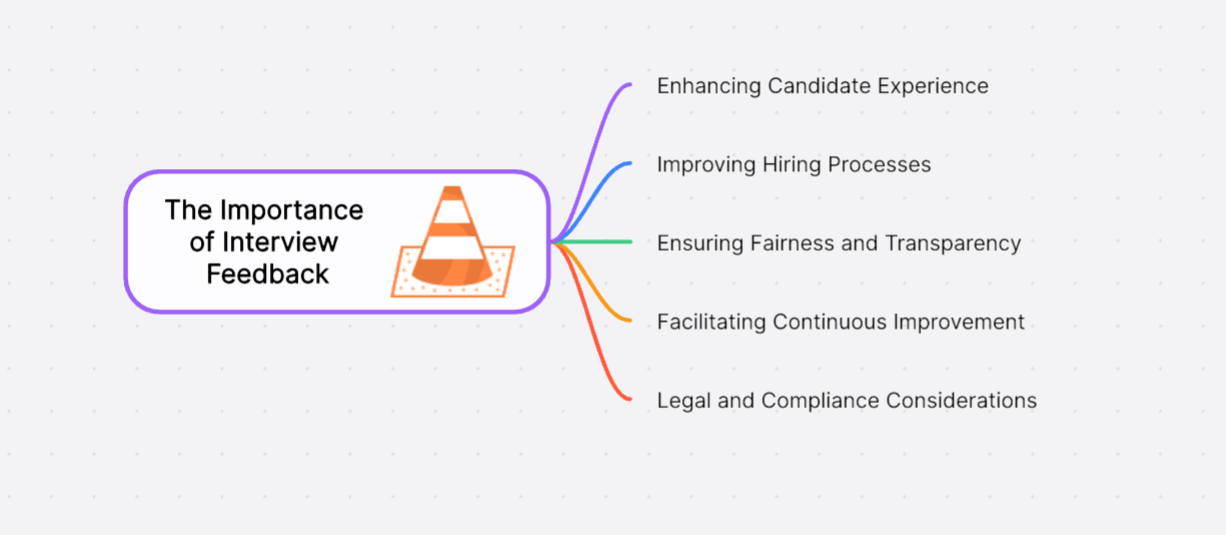
Enhancing Candidate Experience
Feedback, when delivered constructively, can significantly enhance a candidate's experience. It shows that the organization values the candidate’s effort and time, even if they were not selected. Positive and constructive feedback helps candidates understand their strengths and areas for improvement, contributing to their professional growth. This, in turn, fosters a positive image of the organization and may encourage candidates to apply for future positions or recommend the company to others.
Improving Hiring Processes
Interview feedback is a critical tool for improving the hiring process. It provides insights into what worked well and what didn’t, allowing the HR team to refine their interview techniques, selection criteria, and overall recruitment strategy. By analyzing feedback, companies can identify patterns and trends, such as recurring skill gaps or common strengths, and adjust their hiring practices accordingly.
Ensuring Fairness and Transparency
Providing feedback promotes transparency and fairness in the hiring process. It helps in justifying hiring decisions, and ensuring that candidates are evaluated based on merit and clearly defined criteria. This transparency is essential for maintaining the integrity of the hiring process and fostering trust between the organization and its candidates.
Facilitating Continuous Improvement
For hiring managers and interviewers, feedback serves as a tool for continuous improvement. It helps them understand the effectiveness of their interviewing techniques and identify areas where they can improve. This, in turn, contributes to more effective and efficient interviews in the future, leading to better hiring decisions.
Legal and Compliance Considerations
Documenting interview feedback can also have legal and compliance benefits. In cases where hiring decisions are questioned, having detailed feedback can provide evidence that the decision was based on objective criteria and not influenced by bias or discrimination. This documentation can be crucial in defending the organization against potential legal claims.
Part 2: Examples of Interview Feedback
This section offers examples of both positive and constructive feedback that can help guide your feedback process. Whether highlighting a candidate’s strengths or suggesting areas for improvement, these examples will help you deliver feedback that is both meaningful and actionable.
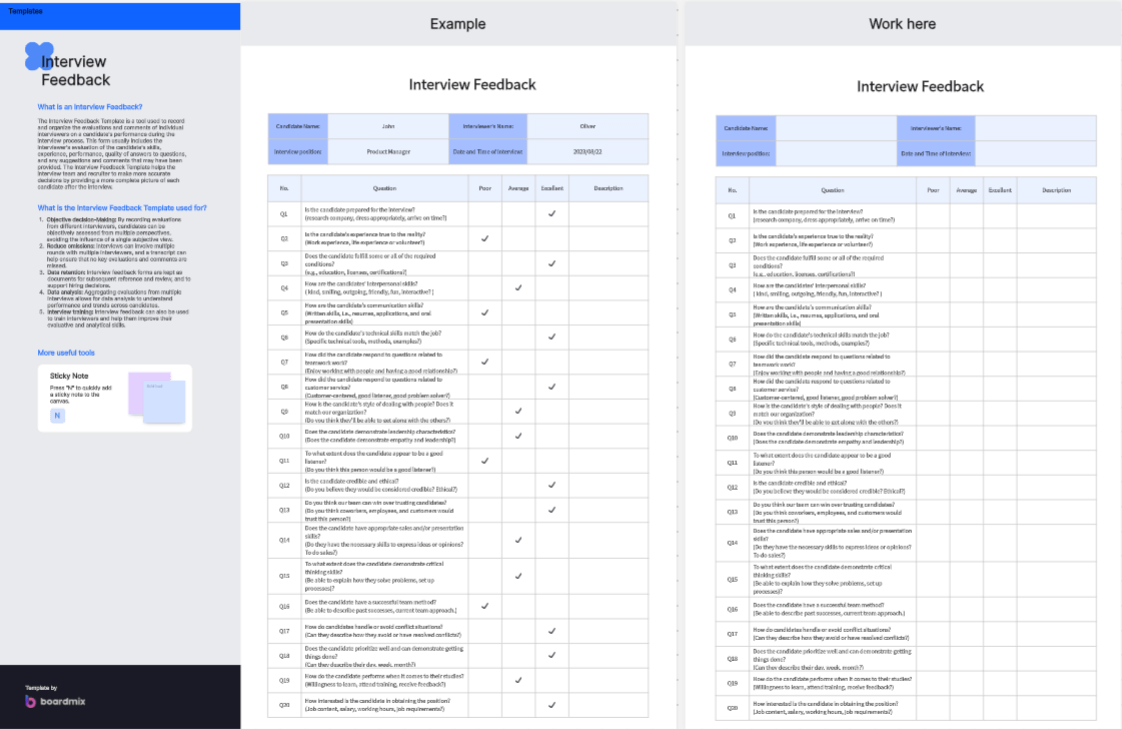
Positive Feedback Examples
Example 1: Strong Technical Skills
"Jane demonstrated excellent technical skills during her interview. Her proficiency in Python and machine learning algorithms was evident from her responses to our coding challenges. She also showcased a solid understanding of data analysis and statistical methods, which are crucial for this role."
Example 2: Effective Communication
"John exhibited exceptional communication skills. He was articulate and clear in explaining his past projects and experiences. His ability to convey complex information simply and understandably is impressive and would be a valuable asset to our team."
Constructive Feedback Examples
Example 1: Areas for Improvement in Technical Skills
"While Tom has a good foundation in JavaScript, he struggled with some of the more advanced coding questions. We recommend that he focus on improving his knowledge of asynchronous programming and modern JavaScript frameworks like React and Node.js."
Example 2: Enhancing Problem-Solving Approach
"Anna has a good analytical mindset but seemed to struggle with the structured problem-solving approach we use. We suggest she work on developing a more systematic approach to problem-solving, perhaps through courses or practice with case studies."
Feedback for Future Potential
Example 1: Potential for Growth
"Emily showed great potential during the interview. Although she lacks some of the specific experience we're looking for, her enthusiasm and willingness to learn are commendable. With some additional training, we believe she could excel in this role."
Example 2: Leadership Potential
"David demonstrated strong leadership potential. His ability to manage and motivate teams, as well as his strategic thinking, stood out. While he might need to gain more experience in certain technical areas, his leadership skills are a significant asset."
Part 3: How to Ask for Feedback after Interview
Knowing how to ask for feedback can make a significant difference in a candidate’s job search and professional development. This section provides practical tips for candidates on how to request feedback professionally and effectively. It also includes sample emails that candidates can use to ask for feedback after an interview.
Tips for Candidates
1. Timing Matters
It’s important to choose the right time to ask for feedback. Ideally, wait until the interview process is completed and you’ve been informed of the decision. Asking too soon can come across as presumptive.
2. Be Polite and Professional
When requesting feedback, maintain a polite and professional tone. Express gratitude for the opportunity to interview and for any feedback provided.
3. Be Specific
Ask for specific feedback. Instead of a general request, specify that you are looking for insights into areas where you can improve and strengths you can build upon.
4. Be Open to Criticism
Approach feedback with an open mind. Understand that constructive criticism is meant to help you grow professionally.
Sample Request for Feedback Email
Subject: Request for Interview Feedback – [Your Name]
Dear [Interviewer’s Name],
I hope this message finds you well. I wanted to express my sincere gratitude for the opportunity to interview for the [Position] role at [Company] on [Date]. I enjoyed learning more about your team and the exciting projects you are working on.
I am writing to kindly request any feedback you could provide regarding my interview. I am always looking to improve and would greatly appreciate any insights you can offer on my performance and areas where I can enhance my skills.
Thank you once again for your time and consideration. I look forward to staying in touch.
Best regards,
[Your Name]
Tips for Employers
1. Be Prompt
Provide feedback promptly after the interview process is complete. This shows respect for the candidate’s time and helps them move forward in their job search.
2. Be Constructive and Specific
Offer feedback that is both constructive and specific. General comments are less helpful than detailed insights into the candidate’s performance.
3. Be Honest but Kind
Strive to be honest without being overly harsh. Balance constructive criticism with positive feedback to maintain the candidate’s morale.
4. Encourage Future Applications
If appropriate, encourage the candidate to apply for future opportunities. This helps maintain a positive relationship and keeps the door open for potential future hires.
Part 4: Editable Forms for Interview Feedback
Providing a structured feedback form can streamline the feedback process for interviewers and ensure consistency. Below are interview feedback forms that you can use for different stages of the interview process. These editable forms allow you to customize the criteria and ratings based on your specific needs and you can use them on Boardmix for free.
Basic Interview Feedback Template:
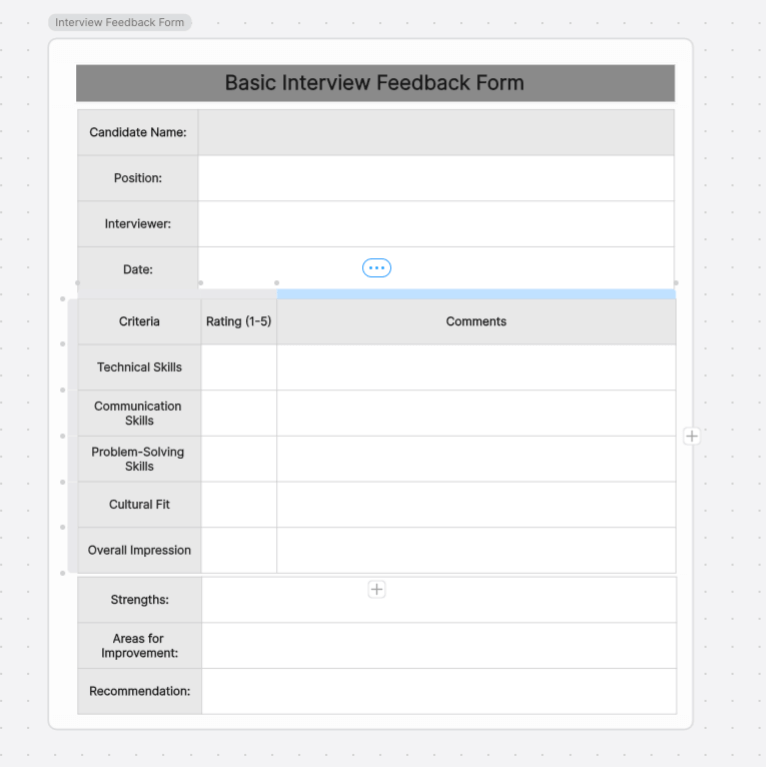
Advanced Interview Feedback Template:
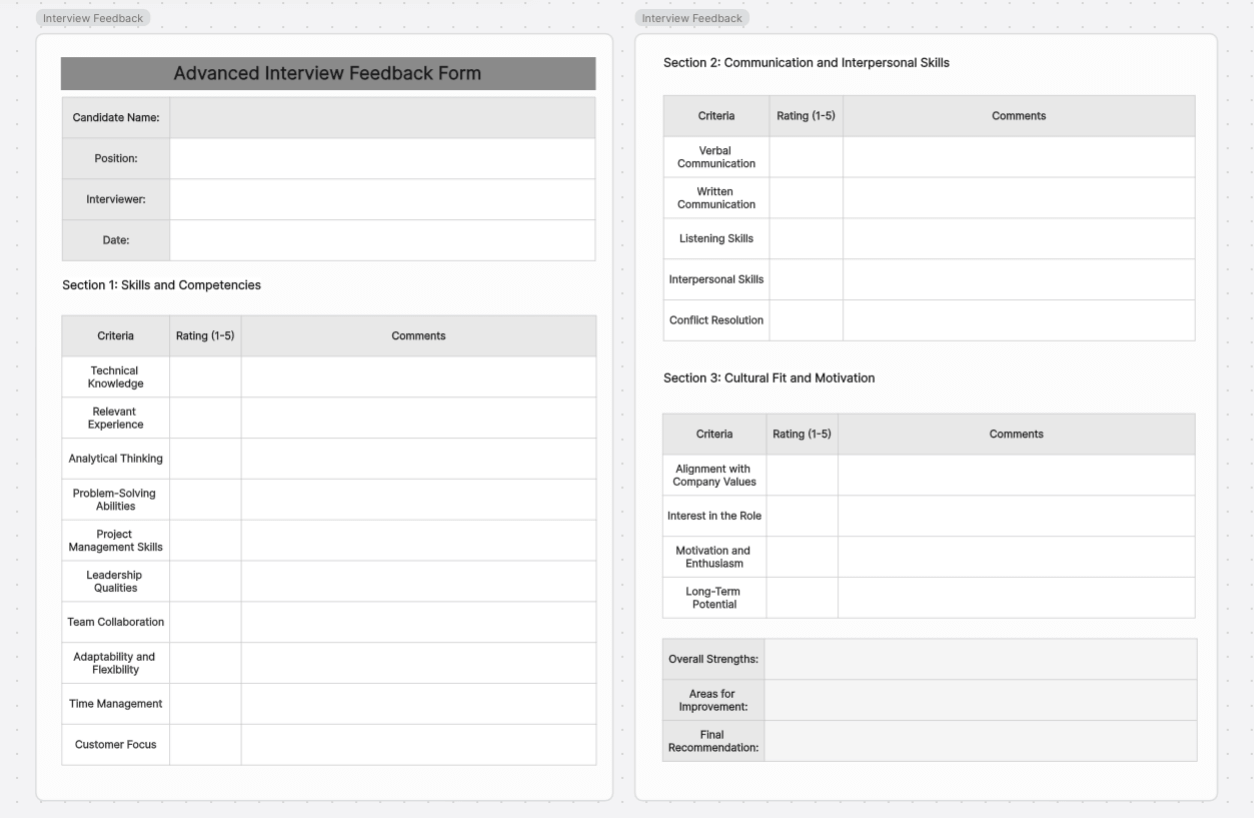
Part 5: Steps to Use Interview Feedback Templates on Boardmix
To use these interview feedback templates, you can navigate to the workspace of Boardmix, an online whiteboard that provides various free templates. This step-by-step guide will help you use the interview feedback template effectively to streamline your recruitment process.
Step 1: Log in to Your Boardmix Account
To get started, log into your Boardmix account using your credentials. If you're new to Boardmix, create an account by following their easy sign-up process.

Step 2: Search and Choose Interview Feedback Template
Once you've logged in, navigate to the 'Templates' section available on the platform's main page. Here, you'll find a plethora of ready-to-use templates categorized under various topics, use the search bar for a quicker find.

Step 3: Customize and Edit Your Interview Feedback Form
After selecting the template, it will open in a new Boardmix workspace. The pre-designed format typically includes fields for candidate details, interviewers' names, scoring sections for various parameters, and comment boxes for detailed feedback.
However, Boardmix gives you complete freedom to customize it as per your unique needs. You can:
- Add or delete sections: Click on an existing section and hit the 'Delete' button on your keyboard to remove it. To add new sections or fields, select the 'Text' option from the toolbar and click on the board where you wish to add content.
- Modify text: To edit any text, click on it to open the text box and make your changes.
-Change visual elements: Boardmix allows you to modify colors, fonts, or border styles. These visual elements can be tailored to match your organization's branding.

Step 4: Save Your Work, Share and Collaborate
Boardmix will save your work online anytime. Once you have customized the template to your satisfaction, you can then share it with other interview panel members.
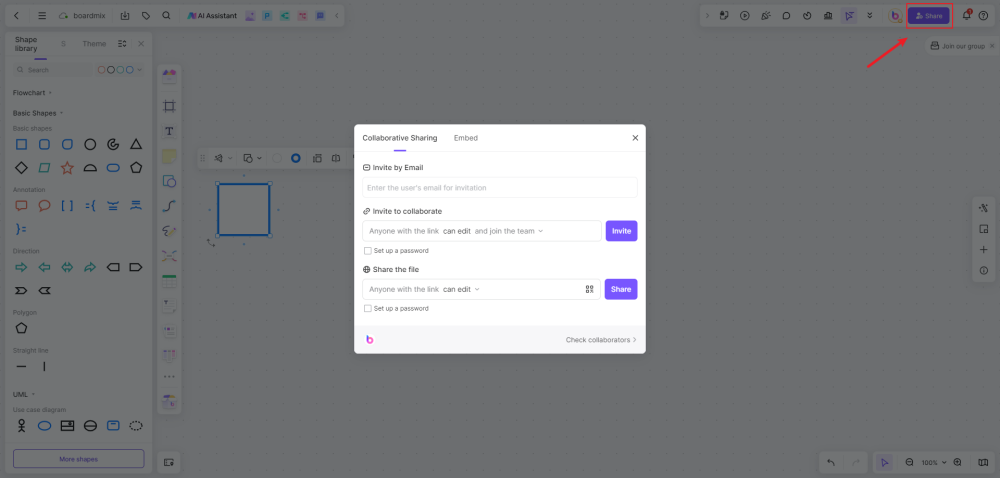
Boardmix's collaboration feature allows multiple people to view and edit the feedback form simultaneously in real-time. This way, each interviewer can easily add their feedback after their interaction with the candidate. All data is stored safely on Boardmix, making it a reliable tool for maintaining records over time.
Conclusion
Incorporating structured interview feedback into your hiring process enhances candidate experience, refines recruitment strategies, and ensures fair, transparent decisions. By using the examples, tips, and editable forms provided, you can streamline feedback, support candidate growth, and continuously improve your interviewing techniques. Embrace feedback to foster a positive organizational image and make informed hiring choices. The interview feedback template on Boardmix serves as an efficient tool for standardizing and streamlining your interview feedback process. Its ease of use and collaborative capabilities ensure that collecting and analyzing feedback becomes a smooth and effective task. Get started and try it for free now!









